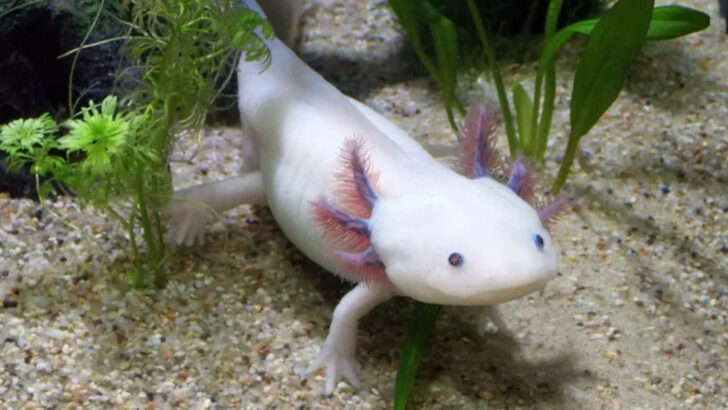It’s easy to assume we’ve seen it all when it comes to wildlife—especially with nature documentaries, trail cams, and the internet putting distant animals at our fingertips. But out in the wild, there are species so elusive or scarce that even seasoned researchers spend years without a single sighting. Some live deep in remote forests, others in fragile ecosystems that are shrinking fast.
These animals don’t just fly under the radar—they almost disappear into it. Their rarity makes them all the more intriguing, and in many cases, more vulnerable. Whether it’s due to habitat loss, human interference, or just the natural odds of survival, spotting one in person is close to winning the wildlife lottery.
Vaquita
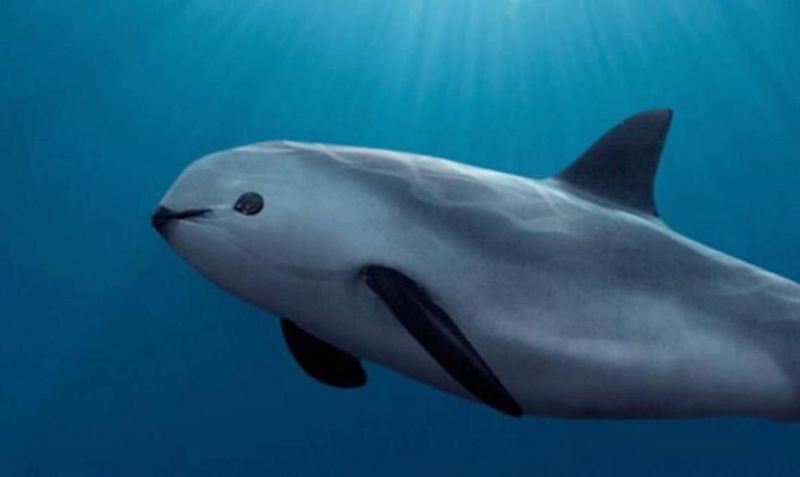
The vaquita, with its gentle eyes ringed in black, is the world’s smallest cetacean. Found only in the Gulf of California, its numbers are alarmingly low. This tiny porpoise, measuring about 5 feet and weighing up to 120 pounds, is critically endangered.
Overfishing and illegal fishing practices have driven it to the brink. Conservationists are racing against time to save these shy creatures. Once thriving, now fewer than 10 remain, making it a symbol of urgent environmental action. Its plight highlights the delicate balance of marine ecosystems, urging us to cherish and protect our oceans.
Ili Pika
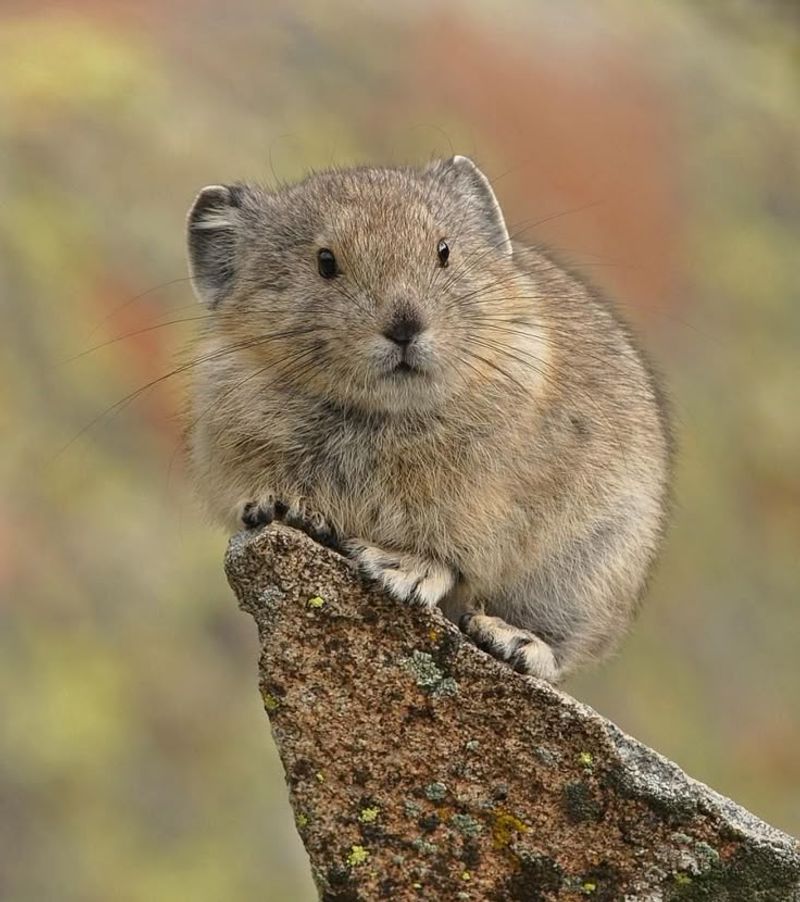
With ears resembling Mickey Mouse, the Ili Pika is as adorable as it is rare. Found in the remote Tianshan mountains of China, this little mammal is elusive and hard to spot. It thrives in cold, rocky environments, feeding on grasses and herbs.
Discovered in the 1980s, this ‘magic rabbit’ is endangered due to climate change and habitat loss. Its population is estimated to be less than 1,000. Conservation efforts are ongoing, but the Ili Pika’s future remains uncertain. Its rarity and charm captivate nature enthusiasts worldwide, bringing attention to its fragile habitat.
Saola
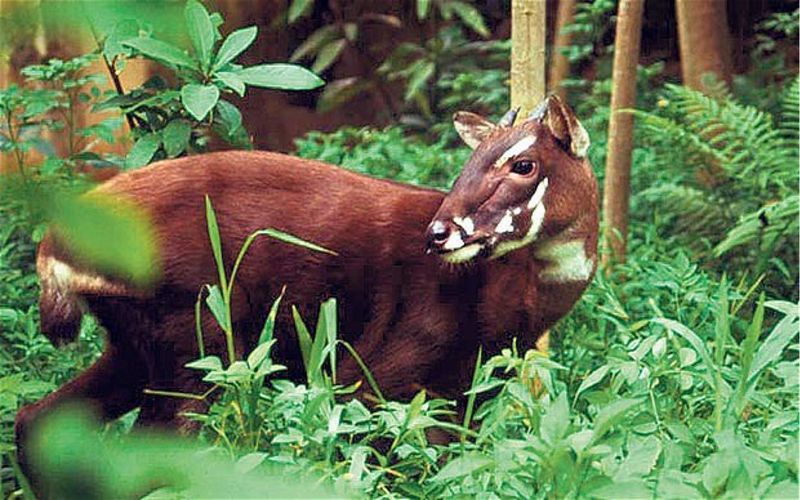
In the dense forests of Vietnam, an elusive creature known as the Saola roams. Often dubbed the ‘Asian unicorn,’ this animal is rarely seen due to its critically endangered status. Its long, slender horns and gentle eyes are a sight few have witnessed firsthand.
Living in the Annamite Range, the Saola avoids human interaction, making it even more mysterious. Conservationists are racing against time to protect this species, as its natural habitat faces threats from deforestation and hunting. Efforts are underway to ensure that this unique animal does not vanish into myth.
Axolotl
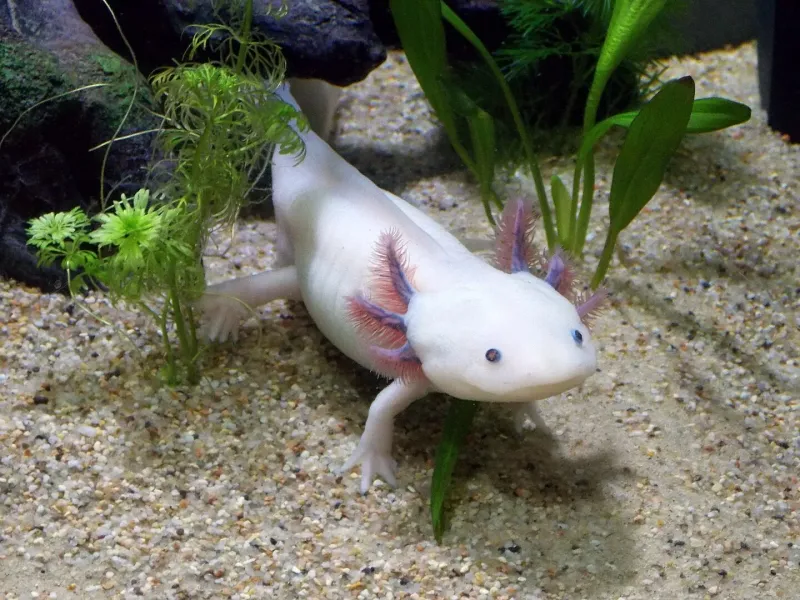
The axolotl, often called the “Mexican walking fish,” is an extraordinary amphibian distinguished by its ability to regenerate limbs. Native to lakes in Mexico, these creatures have become symbols of resilience and adaptability. Their external gills and perpetual smile give them a distinct, endearing appearance.
Axolotls are critically endangered in the wild, primarily due to habitat loss and pollution. Captive breeding programs strive to preserve their lineage, but their natural sightings are increasingly scarce.
The axolotl’s tale underscores the importance of habitat preservation and environmental stewardship.
Vaquita
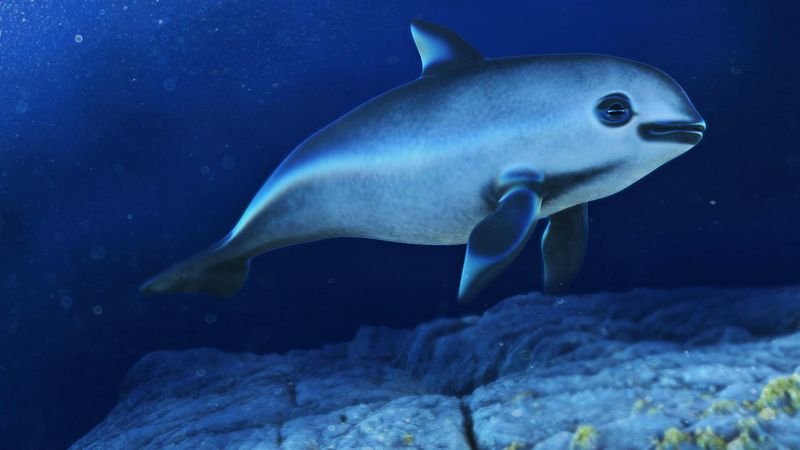
In the warm waters of the Gulf of California, the Vaquita, a small porpoise, struggles for survival. Known for its distinctive facial markings, this marine mammal is critically endangered, with fewer than 10 individuals estimated to remain.
Despite conservation efforts, illegal fishing practices threaten its existence. The Vaquita’s plight highlights the urgent need for stronger protective measures in marine environments. Awareness campaigns aim to save this species from extinction, but time is running out. Observing a Vaquita in its natural habitat is a rare and precious opportunity, one that may soon be lost.
Kakapo

In the forests of New Zealand, the Kakapo, a nocturnal parrot, resides. Known for its bright green feathers and hefty build, this bird is flightless and critically endangered.
Efforts to save the Kakapo focus on predator control and habitat restoration. With only a few hundred individuals left, each one is monitored closely. The Kakapo’s story is one of survival against all odds, showcasing the impact of dedicated conservation work. Encountering this bird in the wild is a rare experience, offering a glimpse into a unique ecological narrative.
Amur Leopard
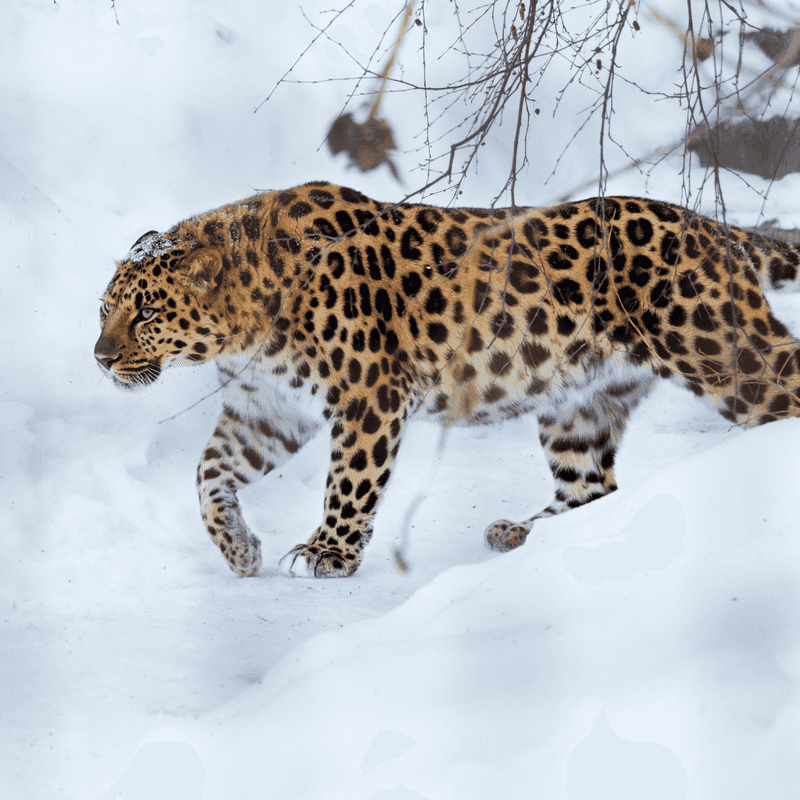
In the snowy forests of Russia, the Amur Leopard glides through the trees. This solitary feline is one of the rarest big cats, known for its beautiful, spotted coat that blends seamlessly with the winter landscape.
Fewer than 100 individuals remain, threatened by habitat loss and poaching. Conservation programs focus on increasing prey availability and habitat corridors. Witnessing an Amur Leopard in its natural habitat is a fleeting experience, capturing the essence of wilderness. Its survival depends on continued conservation efforts, illustrating the critical need for wildlife protection.
Javan Rhino

In the dense jungles of Indonesia, the Javan Rhino wanders quietly. With its thick, armor-like skin and smaller horn, it differs from its African relatives. Sadly, this species is critically endangered, with fewer than 70 individuals left.
Poaching and habitat loss have drastically reduced its numbers. Conservationists work tirelessly to protect this rhino, focusing on habitat preservation and anti-poaching efforts. The Javan Rhino serves as a reminder of the delicate balance within ecosystems. Spotting one in the wild is a rare privilege, marking a moment of connection with nature’s resilience.
Ili Pika
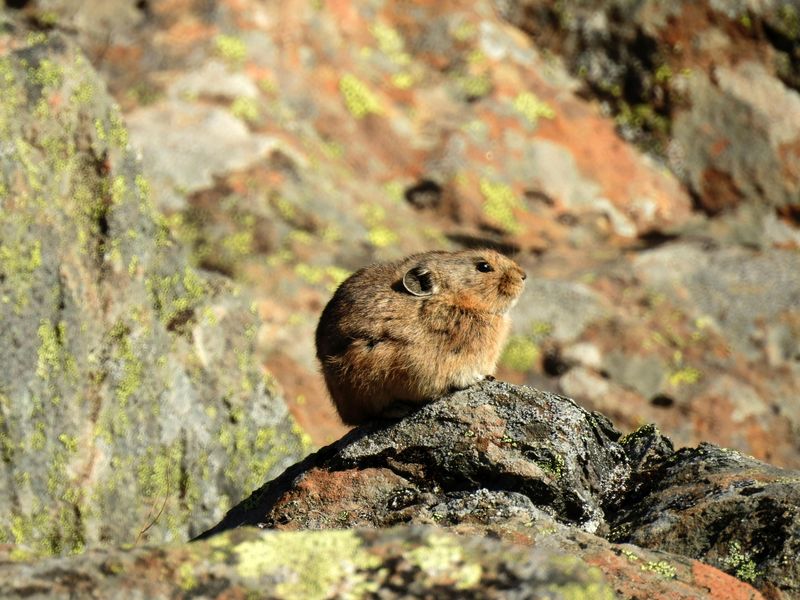
High in the Tianshan Mountains, the Ili Pika, a small mammal, finds its home. This tiny creature, with its round body and large ears, is rarely seen by human eyes.
Discovered in the 1980s, the Ili Pika is listed as endangered, facing threats from climate change and habitat disruption. Conservationists have limited information about this elusive animal, making protection efforts challenging. Spotting an Ili Pika is a rare event, symbolizing the hidden wonders of mountainous regions. Its tale is a reminder of the vast, unexplored biodiversity within high-altitude ecosystems.
Tapanuli Orangutan
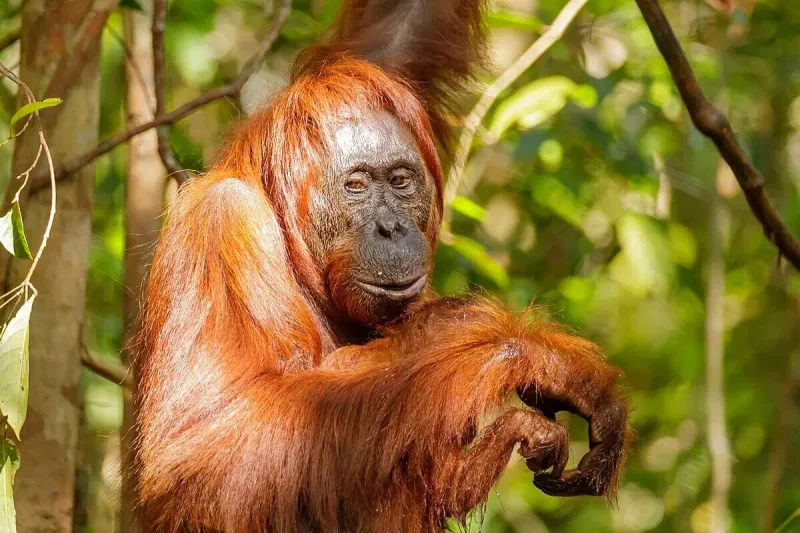
Discovered in 2017, the Tapanuli orangutan is the most endangered species of great ape. Endemic to the Batang Toru forest in Sumatra, it faces threats from deforestation and mining activities. With only a few hundred individuals remaining, their survival hangs by a thread.
These orangutans are known for their distinct vocalizations and unique diet, which includes fruits and insects. Conservation efforts focus on protecting their habitat and raising awareness about their plight.
Encountering a Tapanuli orangutan is a rare and precious opportunity, highlighting the urgency of saving this remarkable species.
Philippine Eagle
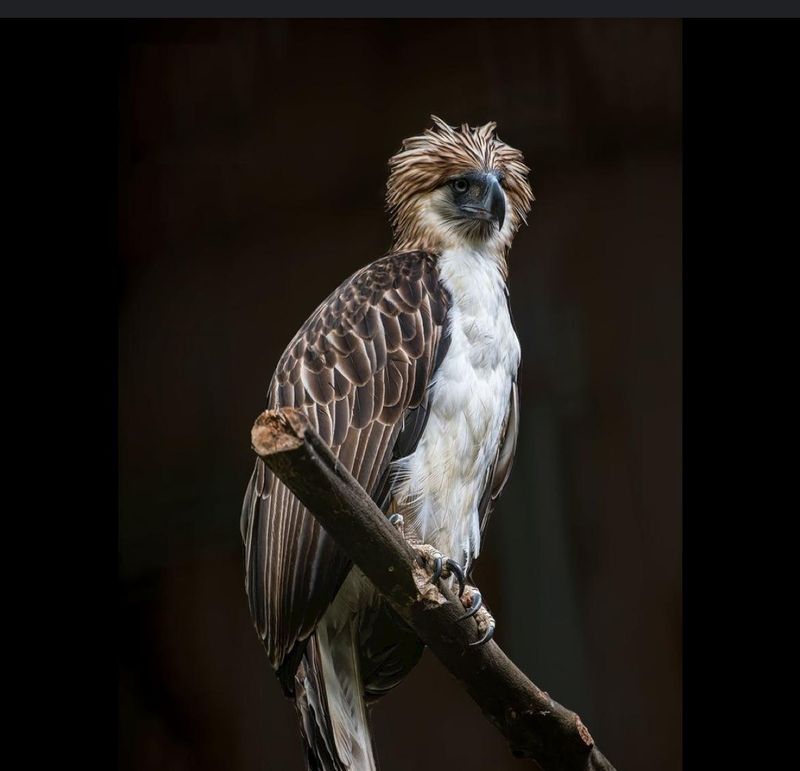
In the skies above the Philippines’ rainforests, the Philippine Eagle soars with grace. This majestic bird, known for its massive wingspan and distinctive crest, is critically endangered.
Deforestation and hunting have drastically reduced its numbers, leaving only a few hundred remaining. Conservation efforts focus on habitat protection and breeding programs. Seeing a Philippine Eagle in flight is a symbol of hope and conservation success. Its survival depends on ongoing efforts to safeguard its natural habitat, highlighting the importance of preserving our planet’s biodiversity for future generations.
Ploughshare Tortoise
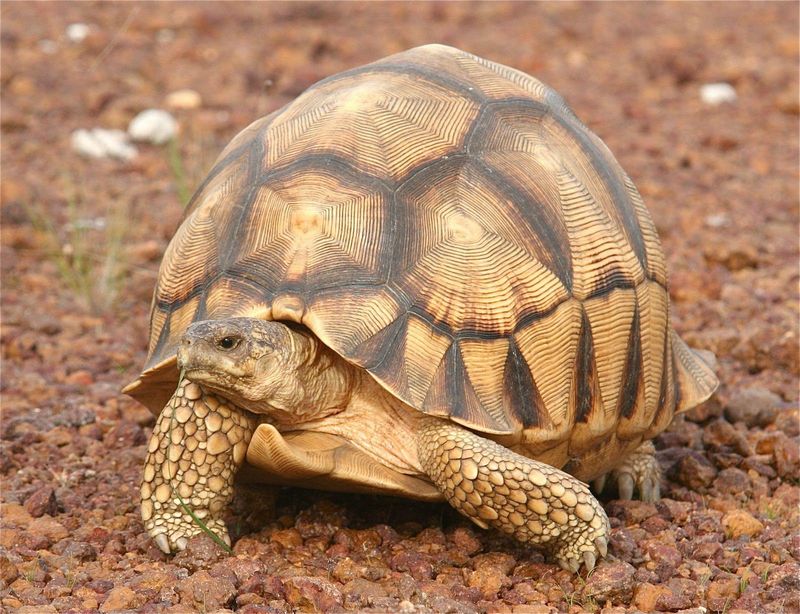
In Madagascar’s dry forests, the Ploughshare Tortoise ambles slowly. Its distinct gold-colored shell makes it a target for illegal poaching, contributing to its critically endangered status.
Efforts to save this species focus on captive breeding and habitat restoration. Conservationists work to prevent its extinction, but challenges remain. The Ploughshare Tortoise’s plight underscores the need for stronger wildlife protection laws. Observing one in its natural habitat is a rare occasion, reminding us of the delicate balance within ecosystems. Its story is a call to action in the fight against biodiversity loss.
Northern Hairy-nosed Wombat
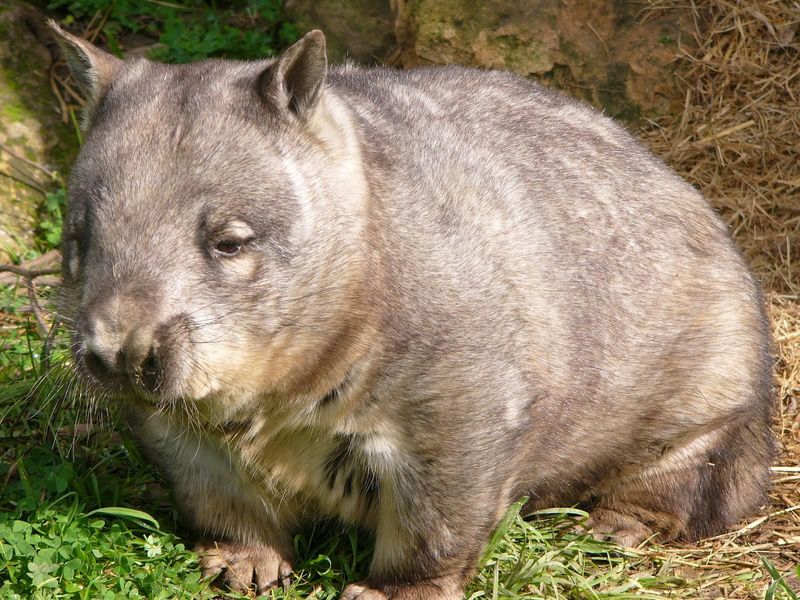
In Australia’s grasslands, the Northern Hairy-nosed Wombat digs in search of roots. This burrowing marsupial, characterized by its furry nose, is critically endangered.
Once widespread, its population now hovers around 250 individuals, confined to protected areas. Conservationists focus on habitat management and predator control to ensure its survival. Seeing this wombat in the wild is a testament to successful conservation efforts. Its existence highlights the importance of protecting species at the brink of extinction, emphasizing the role of dedicated research and management in preserving biodiversity.
Yangtze Finless Porpoise

In the murky waters of the Yangtze River, the Yangtze Finless Porpoise navigates its domain. Known for its smooth body and inquisitive nature, this porpoise faces critical endangerment.
Pollution and habitat degradation threaten its survival, with population numbers in decline. Conservationists advocate for cleaner waters and protective measures. Observing a Yangtze Finless Porpoise is a rare and enchanting experience, emphasizing the urgency of river conservation. Its tale serves as a powerful reminder of the impact of human activity on aquatic ecosystems, calling for immediate action to protect these vulnerable creatures.
Pangolin (All Species, Especially the Philippine and Sunda Pangolin)
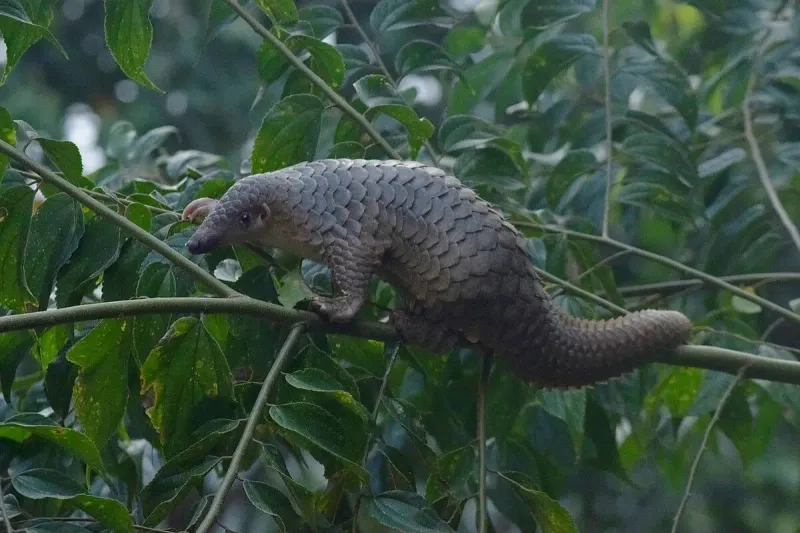
The pangolin is a unique creature, distinguished by its protective keratin scales, covering much of its body. Found in Asia and Africa, these nocturnal beings are adept at curling into a tight ball to evade predators. Despite their formidable armor, all pangolin species face severe threats from poaching and habitat loss, making them critically endangered.
In the wild, they feast on ants and termites, using their long, sticky tongues to capture prey. Their elusive nature and dwindling numbers make sightings incredibly rare, presenting a conservation challenge that demands urgent attention and action.
Giant Chinese Salamander
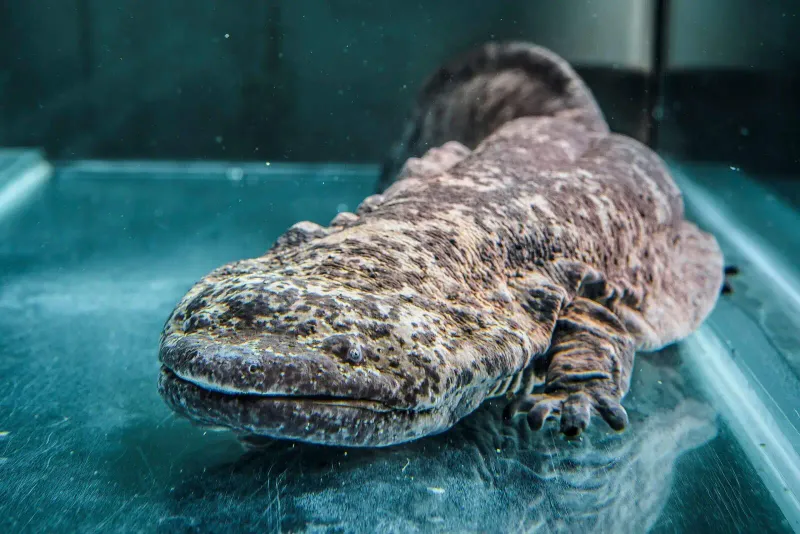
The Giant Chinese Salamander is the largest amphibian in the world, reaching lengths up to 1.8 meters. Endemic to rocky streams and lakes in China, this nocturnal creature is elusive and rarely seen by humans. Its wrinkled appearance and mottled brown skin help it blend seamlessly into its environment.
Sadly, the species faces critical threats due to habitat destruction, pollution, and illegal hunting for food. Conservation efforts are underway, but the salamander’s secretive habits make it a challenging task. Protecting these gentle giants is crucial for maintaining ecological balance.
Hirola (Hunter’s Antelope)
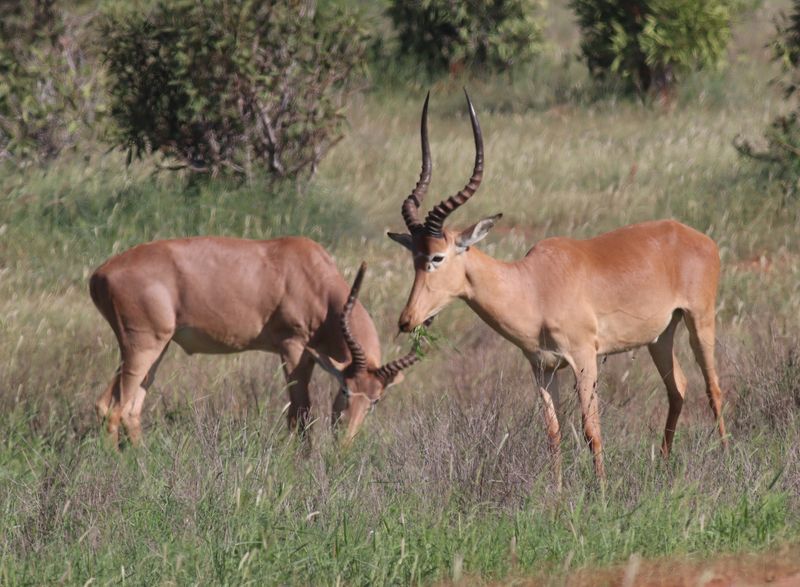
The Hirola, often dubbed the world’s rarest antelope, roams the arid grasslands of Kenya and Somalia. Recognizable by its striking facial markings and elegant horns, the Hirola is a symbol of resilience. Once abundant, their numbers have dwindled drastically due to habitat loss, disease, and competition with livestock.
Efforts to conserve the Hirola focus on habitat restoration and community engagement. Observing a Hirola in its natural habitat is a rare privilege, offering a glimpse into a disappearing world. Every sighting is a reminder of the delicate balance required to sustain biodiversity.
Amazon River Dolphin (Pink Dolphin)
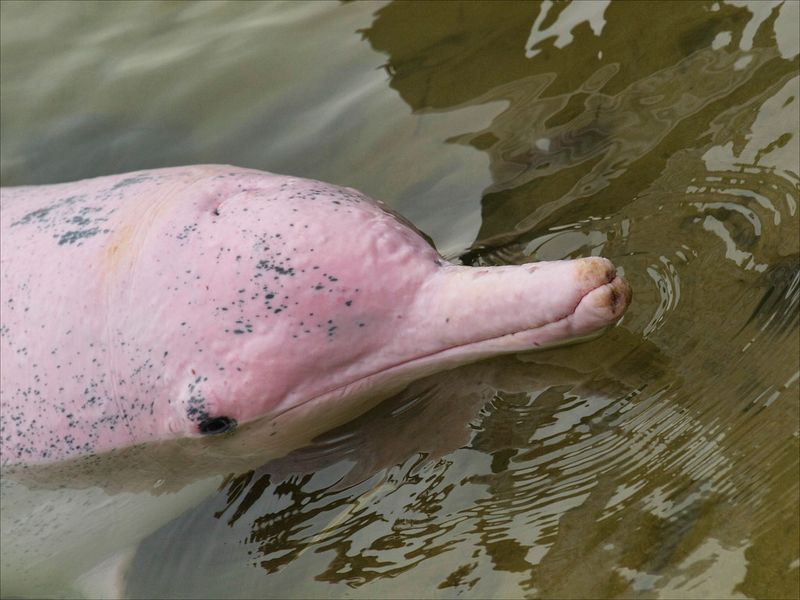
The Amazon River Dolphin, with its distinctive pink hue, is a mysterious inhabitant of South America’s vast river systems. Known for their intelligence and playful nature, these dolphins navigate murky waters with ease, aided by their long snouts and flexible bodies.
Despite their charisma, Amazon River Dolphins face threats from pollution, habitat degradation, and accidental entanglement in fishing gear. Conservationists are working hard to protect these enchanting creatures. Their elusive presence makes any encounter a treasured moment, reflecting the wonders hidden beneath the Amazon’s surface.
Pygmy Three-Toed Sloth
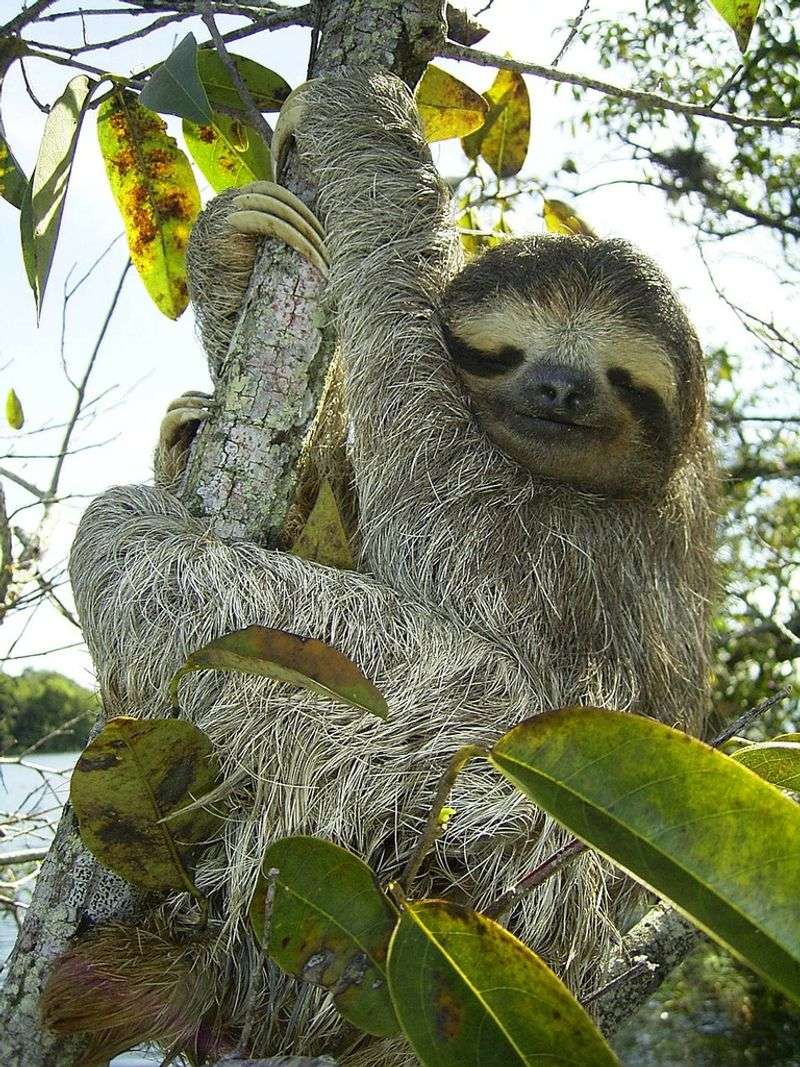
The Pygmy Three-Toed Sloth inhabits the remote Isla Escudo de Veraguas off Panama’s coast, living exclusively in mangrove forests. With its slow movements and gentle nature, this sloth is a master of camouflage, blending into its lush surroundings.
It’s critically endangered, with its population threatened by habitat destruction and limited food sources. Conservationists are working tirelessly to protect these charming creatures, essential to maintaining the ecological balance of their unique habitat. Spotting one is an exceptional experience, emphasizing the need for continued protection of Panama’s natural wonders.
Gooty Sapphire Tarantula
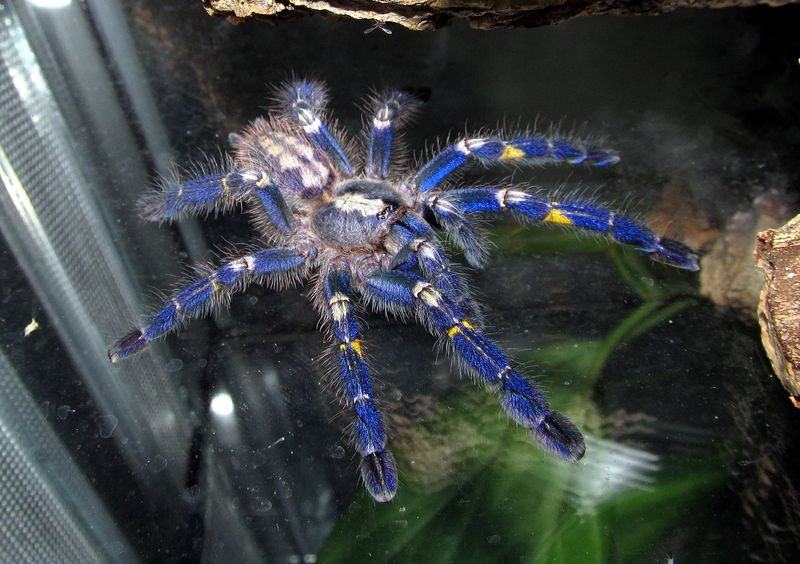
The Gooty Sapphire Tarantula, named for its vibrant blue hues, is a striking arachnid native to the forests of Andhra Pradesh, India. Its electric coloration makes it one of the most spectacular spiders, but also incredibly rare in the wild.
Threatened by habitat loss and the illegal pet trade, conservationists strive to protect this beautiful species. Gooty Sapphire Tarantulas are arboreal, living high in the trees, which adds to their elusive nature. Spotting one in its natural habitat is a rare treat, offering a glimpse into the hidden beauty of the arachnid world.
Helmeted Hornbill
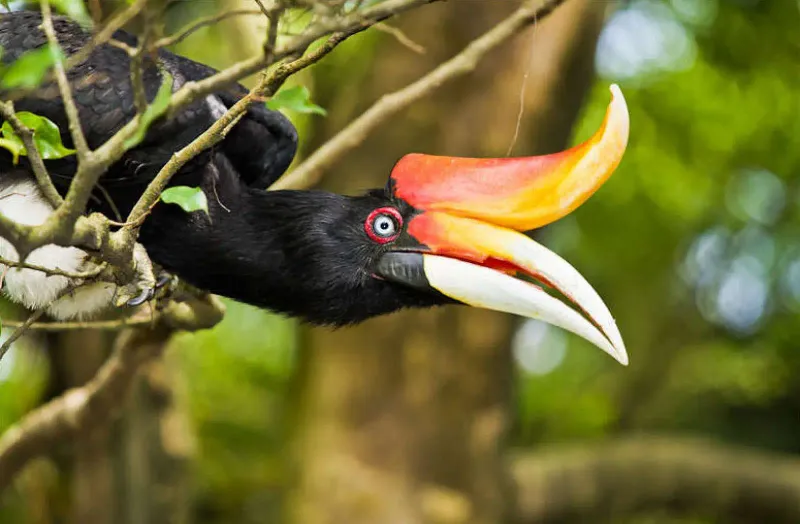
The Helmeted Hornbill, with its large casque, stands out as one of the most peculiar birds in the tropical forests of Southeast Asia. Known for its loud calls, this bird plays a crucial role in seed dispersal, maintaining forest ecosystems.
Sadly, the Helmeted Hornbill is critically endangered due to poaching for its casque, used in traditional carvings. Conservationists are battling against illegal trade to protect these unique birds. Encountering a Helmeted Hornbill is a rare moment, offering insight into the complex interplay of nature and culture.
Purple Frog (Indian Burrowing Frog)
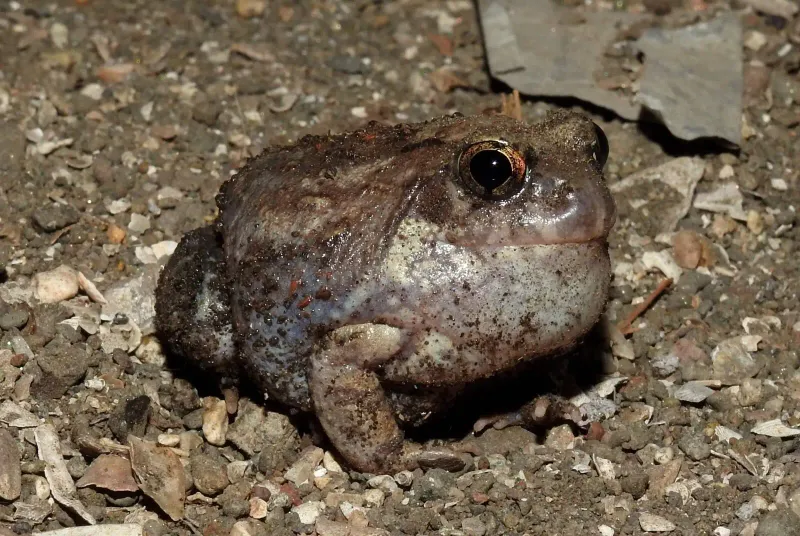
The Purple Frog, known for its bulbous body and unusual purple hue, spends most of its life underground in the Western Ghats of India. Emerging only during the monsoon to breed, this frog is an enigma to scientists.
Its reliance on a single habitat type makes it extremely vulnerable to environmental changes and habitat loss. Efforts to conserve its habitat are crucial for its survival. Spotting a Purple Frog is an extraordinary event, providing a rare connection to the evolutionary mysteries of amphibians.
Spix’s Macaw
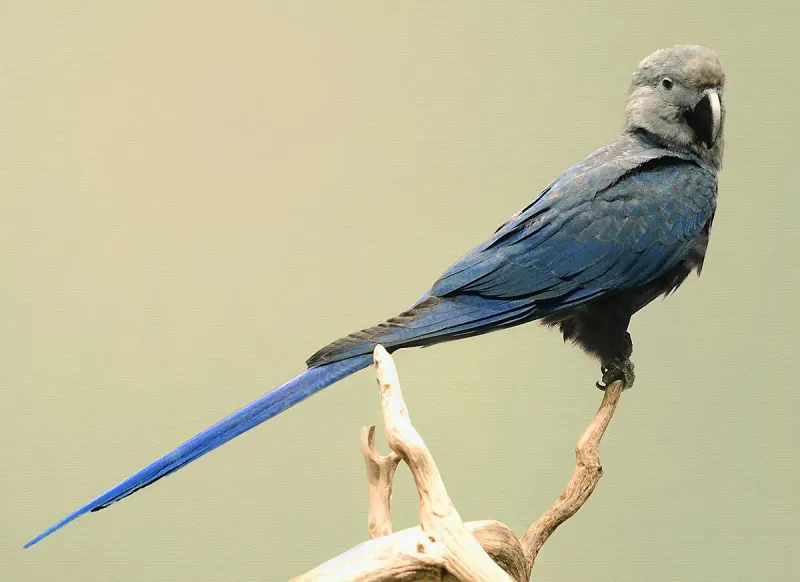
The Spix’s Macaw, famously known as the inspiration for the animated film ‘Rio,’ is a parrot native to the Brazilian caatinga. Its captivating blue feathers and vocal mimicry skills make it a marvel. Once declared extinct in the wild, reintroduction efforts aim to rebuild its population.
Conservationists focus on habitat restoration and breeding programs to ensure their survival. Seeing a Spix’s Macaw in its natural setting is a glimpse into a hopeful conservation story, emphasizing the resilience of nature and the power of dedicated conservation efforts.
Aye-Aye
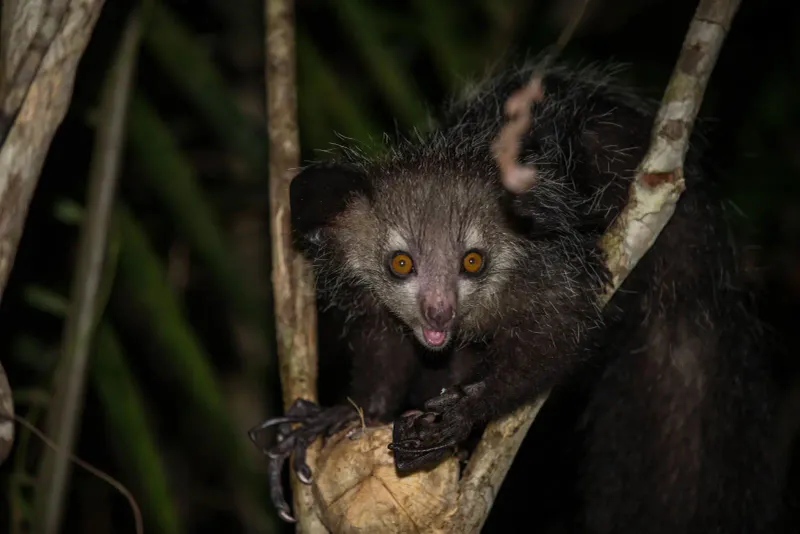
The Aye-Aye, a nocturnal lemur endemic to Madagascar, is a creature of mystery and superstition. Its large eyes, elongated fingers, and rodent-like incisors make it one of nature’s most peculiar mammals.
Feeding mainly on insect larvae, the Aye-Aye uses its specialized middle finger to tap on trees and locate food. Its unusual appearance often associates it with omens, leading to persecution. Conservationists strive to protect the Aye-Aye by dispelling myths and safeguarding its habitat. An encounter with an Aye-Aye is a rare sight, celebrating Madagascar’s unique biodiversity.
Okapi
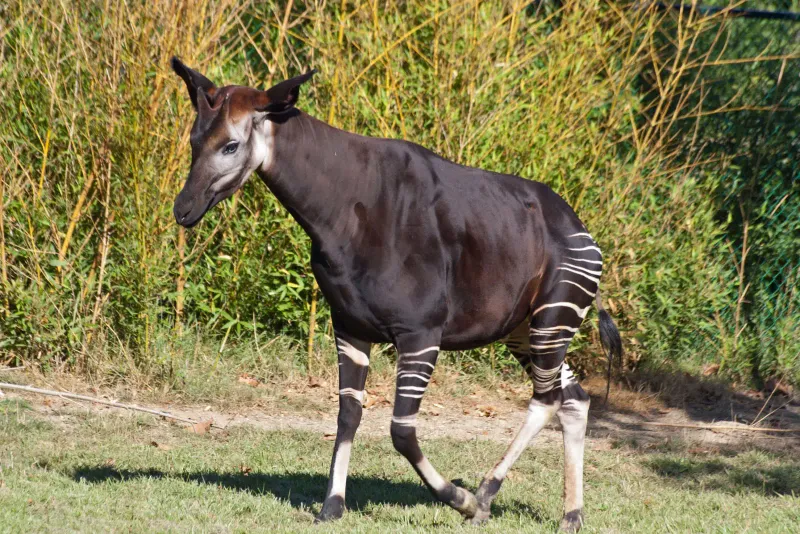
The Okapi, often referred to as the “forest giraffe,” is a shy and elusive animal found only in the dense rainforests of the Democratic Republic of the Congo. With its striped hindquarters and long neck, it is a unique member of the giraffe family.
Threats from deforestation and poaching have made the Okapi a symbol of conservation efforts in Central Africa. Protecting this species is crucial for the health of its forest ecosystem. Spotting an Okapi is a rare and magical experience, showcasing the hidden wonders of the world’s forests.
Madagascar Pochard (World’s Rarest Duck)
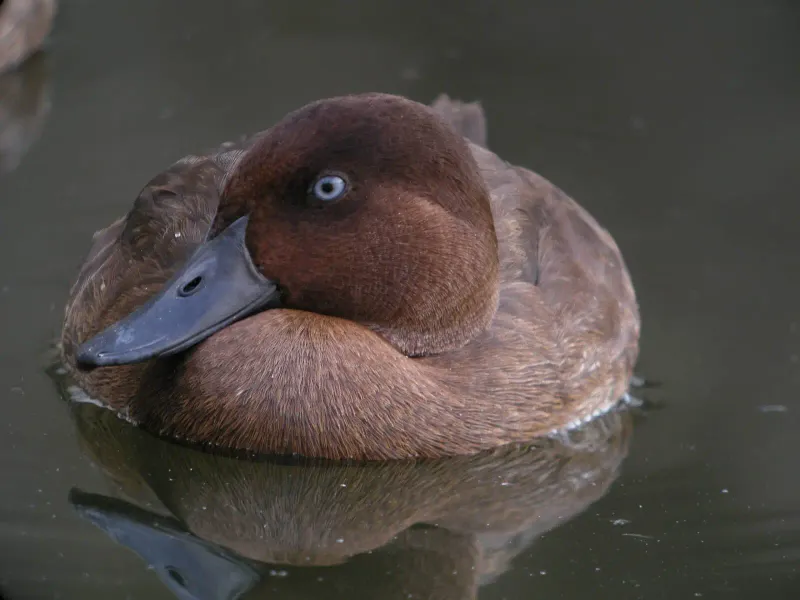
The Madagascar Pochard holds the title of the world’s rarest duck, with its entire population once thought extinct. Rediscovered in a remote lake in Madagascar, this duck’s survival story is one of dedication and hope.
Conservation efforts focus on breeding programs and habitat restoration to prevent its extinction. Observing a Madagascar Pochard in its natural habitat is a testament to the resilience of nature and the necessity of conservation. Its rare presence in the wild is a beacon for biodiversity preservation.
Kakamega Forest Chameleon
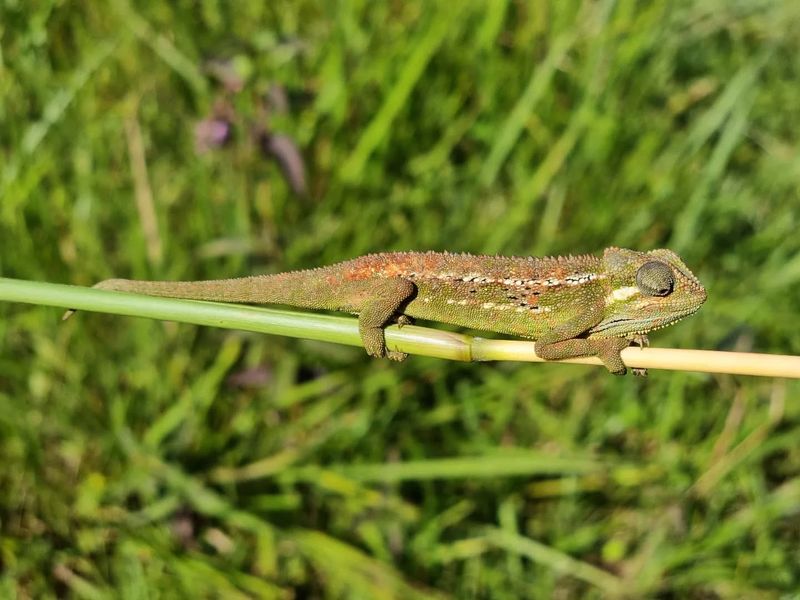
The Kakamega Forest Chameleon is a little-known gem of Kenya’s rainforests, distinguished by its vibrant coloration and adaptive abilities. This chameleon’s ability to blend into its surroundings makes it an elusive subject for observation.
Threatened by habitat loss and climate change, conservationists work to protect its diminishing habitat. Spotting a Kakamega Forest Chameleon is a rare privilege, offering insight into the remarkable adaptability and diversity of life within rainforests. Its presence underscores the need for habitat preservation and careful stewardship of our planet’s resources.

